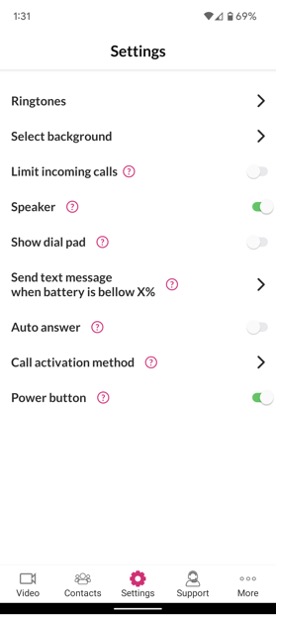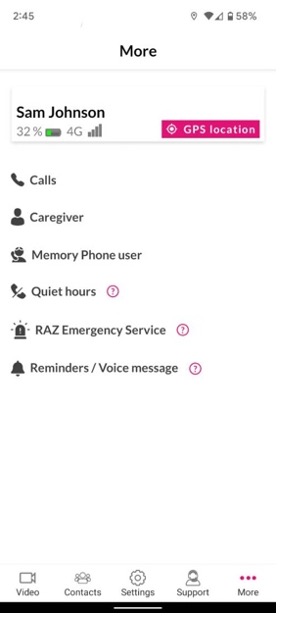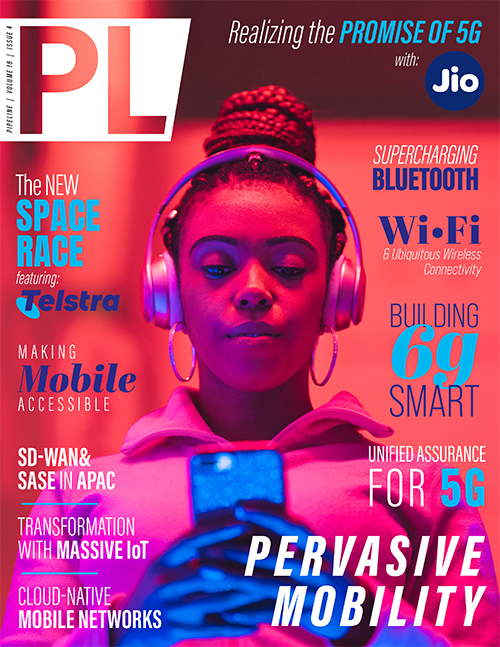Making Mobile Devices More Accessible
Making the RAZ Memory Cell Phone accessible


Figure 2 - Images of the RAZ Care App, which the caregiver uses to control the RAZ Memory Cell Phone
The user is limited to a very simple environment, which they cannot exit. People with intellectual disabilities have differing capabilities. Some, especially those with more advanced dementia, will find almost any level of complexity extremely challenging. The need for simplicity must be the pre-eminent design consideration. As a result, by default, users of the RAZ Memory Cell Phone are limited to one screen. The screen has pictures of contacts with names underneath. To place a call, the user simply presses a picture. The volume rocker is disabled (volume is always set to maximum), the display never goes dark, the user cannot access settings, there is no lock screen, there is no home screen, and there is no scrolling or swiping. Even the power button can be disabled. In the event of an emergency, the user presses a red button at the top of the screen. The user does not even have to dial the digits 9-1-1.
To accommodate the reality that most users of the RAZ Memory Cell Phone are not capable of managing the phone settings and other device features, these capabilities are managed remotely by the caregiver through an online portal or an app on the caregiver’s own phone. For example, the caregiver manages the contacts that appear on the RAZ Memory Cell Phone. This remote management is a critical and necessary design feature of



















